ARMENIANS IN THE OTTOMAN ARMY:
SERVICE AND DESTRUCTION
The history of formation and development of Ottoman Empire is closely connected with the formation and development of its military system. The Ottoman Turks permanently were at invasive warfare, but at the beginning they did not have enough military strength being minority in the occupied areas. To use the military strength of their Christian subjects and to meet increasing needs of their troops, Sultans began to impose a special tax called
devshirme – human tax. Moreover the so called
penjek was imposed on war prisoners according to which one of each five from subject peoples had to be conscripted into the Ottoman army. The Ottoman rulers continually conscripted strong and healthy boys and teenagers who after being converted into Islam were sent to
ajemi (inexperienced, unpracticed) troops, where they got military training and the strongest and battle-worthy ones were included in the
yenicheri troops.
The yenicheri troops were created in 1361-1363 during the reign of Sultan Murad I and mainly were formed of Christians who were converted into Islam forcibly. Many generations of Armenian children were taken away from their native places to serve for the interests of the Ottoman state.
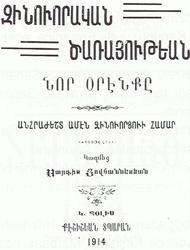 Sargis Hovhannesian, “New law on military service”
Sargis Hovhannesian, “New law on military service”
Constantinople, 1914
Although the conscription of non-Muslims into the Army of Faith was against the principles of sharia, the Ottoman authorities, taking into account the state interests, often ignored their religious norms, using the Christians in their troops(
yaya-infantry,
lağımjı-trench digger,
mezarcı-grave digger and in other troops). The Armenians also served in the Ottoman navy as mercenaries.
For centuries Armenian craftsmen served in the Ottoman land forces and in navy. Saddlers, tailors, especially gunsmiths and other craftsmen were highly estimated in the Ottoman army.
The carpenters of the Ottoman navy were mainly drafted from Armenians and Greeks. The chief smith’s position of Admiralty of the Empire in XVII-XIX centuries was given to the Armenian Demirjibashian family. And the imperial gunpowder industry was controlled by famous Dadian amira family for about a century.
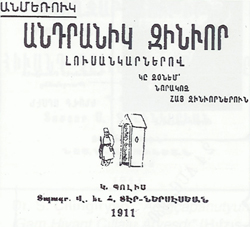 Anmeruk, ”The first soldier”
Anmeruk, ”The first soldier”
Constantinople, 1911
The main provision suppliers of the Ottoman army were Armenian merchants who for centuries met the needs of the army and filled its food reserves. For several centuries such provision suppliers, as Hovhannes bey Khanazat, Abraham Chelebi Aproian, Haji Ohan Yaghechian and others provided their services to the Ottoman Army.
Apart from serving in different spheres of the Ottoman state system, Armenians also held high positions at the Military (War) and Navy ministries. Most of them received high military ranks. Yosep Vardanian (Vardan pasha), Karapet pasha Tavutian, Hovhannes pasha Guyumjian were distinguished for their professional abilities.
 The certificate given to the Commander of the
The certificate given to the Commander of the
battalion of Infantry regiment of
Ottoman Army Agha Nazaret Efendi Daghavarian
who was awarded with an order of 5th level
February 29, 1892
On November 9, 1839, in Gülhane royal palace sultan Abdul Mejid I declared the first manifesto of Ottoman reforms - Hatt-ı Şerif, known as Tanzimat.
Thanks to the opportunities given by Tanzimat and due to the lack of Turkish doctors in army, the Armenian doctors educated in European universities were allowed to serve in the Ottoman army. Since 1841 non-Muslims were given a chance to study at the Imperial Military Medical College, (IMMC), which was established by the initiation of Mahmud II’s personal doctor Manuel Shashian in 1838. Most of the Armenian Military doctors taught in IMMC. Later the Imperial Medical Company was founded by them. Most of the Armenian military doctors received the titles of
pasha and
bey for their distinguished service provided to the Empire. Among them were Gabriel pasha Sevan, the first Armenian doctor of the Ottoman Navy, Anton pasha Nafielian, Tiran pasha Papazian, Hakob bey Tavutian, Gaspar bey Sinapian and others.
 George Ts. V. Arslanian “To an Armenian Soldier”
George Ts. V. Arslanian “To an Armenian Soldier”
Constantinople, 1912
Apart from military doctors, a great number of Armenian pharmacologists and veterinarians served in different detachments of the Ottoman army.
Even after Tanzimat the Sublime Porte refused the idea of general conscription of Christians and continued the taxation of the conscription; first -
iyane-i askeriye (support to the army), then
bedel-i askeriye (for having no military conscription). Nevertheless, when the Ottoman army was fighting against the Kurdish self ruling tribesmen in the Eastern provinces of the country, the Armenians were conscripted for a short time by the government in 1847.
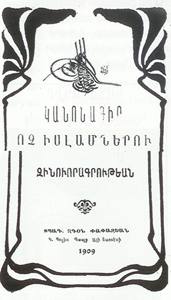 “A law of Conscription of non-Muslims”
“A law of Conscription of non-Muslims”
Constantinople, 1909
In 1864 the Harbiye Military College was founded in Istanbul. By the order of Sultan Abdul Aziz five Armenian teenagers (Gabriel Eknaian, Karapet Barzamian, Simon Tatian, Hovian, Sinarian) entered the college. But they weren’t allowed to get a rank higher than captain
(yüzbaşi).
In 1908, after the re-proclamation of the Constitution the Armenians with other Christians demanded for the right to be recruited and to serve with equal rights in the Ottoman army. According to the law, adopted by the Ottoman parliament in 1910, all nationalities of the Ottoman Empire were to be conscripted. The orders of conscription that were published in August and September of 1910 were admitted by the Armenian youth with great enthusiasm. A lot of Armenian teenagers entered the Harbiye – Ottoman military college and showed their abilities in military service. Most of them received high military ranks. During both Balkan Wars and World War I Armenian soldiers fulfilled their military duties and responsibilities, at the same time showing exceptional abilities and bravery in service.
On August 1, 1914 World War I started. All the men in the Empire from 18 to 45 were conscripted to the army, among them also 60 thousand Armenian men, who joined those already serving in the Ottoman army. In spite of bad conditions for the Armenian soldiers in the army they did their duty with great responsibility. Armenian soldiers saved the Military minister Enver pasha from being taken as war prisoner in the Sarikamish front, who on that occasion sent a letter of gratitude to Zaven Ter-Yeghiayan, Armenian Patriarch of Constantinople.
The defeat at Sarikamish became a pretext to blame Armenian soldiers for treachery. On February 12, 1915 by the order of the same Enver pasha the disarmament of the Armenian soldiers of Ottoman army started, then
amele taburi-es (labor battalions) and
hamal taburi-es (cargo transportation battalions) were formed with the involvement of disarmed Armenian soldiers. At the same time the isolation and arrest of Armenian officers started. This was followed by the order of Enver, Military (War) minister, about the annihilation of Armenian soldiers serving in the Ottoman army. Thousands of Armenian soldiers and army suppliers were cruelly killed by their Turkish companions-in-arms.
Since the first days of the war most of the Armenian doctors serving in the military hospitals fell victims to the war. Some of them died while doing their duty looking after Turkish soldiers infected by typhus. And many others were killed just for being Armenian. The main reason of for survival of some of the Armenian doctors was the lack of the Turkish doctors at the front.
The conscription and service of tens of thousands of young Armenians in the Ottoman army during the World War I once more confirms the inconsistency of the statements of the supporters of Turkish denial that Armenians joined foreign armies creating danger in the rear of the Ottoman army.
The disarmament and annihilation of Armenian soldiers in the Ottoman army was the first stage of the genocide committed against the Armenian population of the Ottoman Empire. The Ottoman Empire annihilated Armenian men to leave no chances for the self-defense and for efficient realization of the premeditated plans of deportation and extermination of the Armenian population.
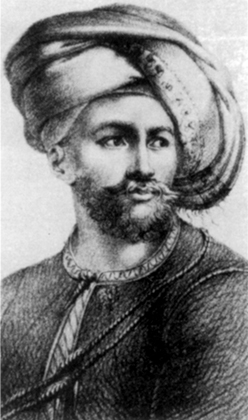
Armenian born Damad Abraham pasha
High-ranking military leader in Ottoman army

Imperial chief gunpowder maker Ohannes bey Dadian (1798-1869)
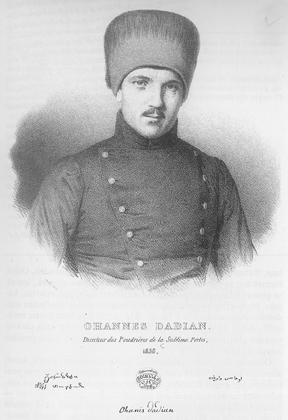
Imperial chief gunpowder maker Ohannes bey Dadian (1798-1869)

Imperial chief gunpowder maker Boghos bey Dadian (1800/01- 1863)

Imperial chief gunpowder maker Simon amira Dadian (1777-1834)

Colonel of the Ottoman army Boghos bey Dadian (1862-1934)

Stepan pasha Aslanian (1822-1901)
Ottoman War ministry staff member in 1870s

Toros bey Gisak
An official of the Ottoman navy, Colonel
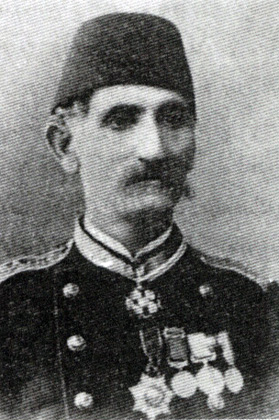
Grigor bey Taguorian (?-1884), Colonel

Anton Yaver pasha Tnkrian (1812-1908)
Colonel of the Ottoman naval forces

Andranik pasha Krchikian (1819-1894), Ottoman officer
Graduated from IMMC with level of captain, 1855/1856
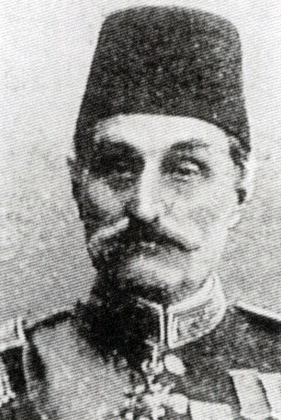
Anton pasha Nafilian (1834-1912)
Chief doctor of the military hospital in Haydarpasha, received Mejidie and Osmanie awards in 1891

Tigran pasha Papayian, Colonel (1861-1939)

Gaspar bey Sinapian, Colonel (1814-1872)
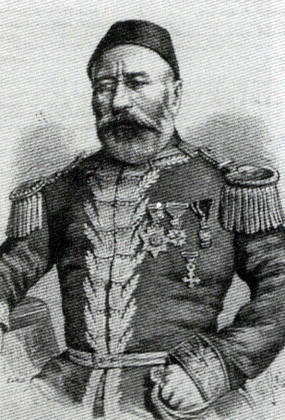
Hovsep Vardanian ( Vardan pasha) (1815-1879), awarded with Mejidie and Osmanie orders

Artin bey Tevletian (1852-1937)
Chief doctor of Second Army during Balkan War
Chief doctor of the military hospital in Gatygyugh during World War I

Tiran pasha Papazian(1858-1926), chief doctor of the Third Ottoman Army

Tigran pasha Peshtimalchian(1837-1894)
The consultant doctor of Sultan Abdul Hamid II

Vahan pasha Manuelian (1847-1902)
Leading teacher of IMMC, court physician
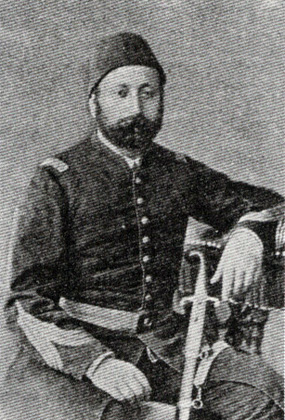
Komitas bey Minasian (1837-1903)
Worked in War ministry since 1878
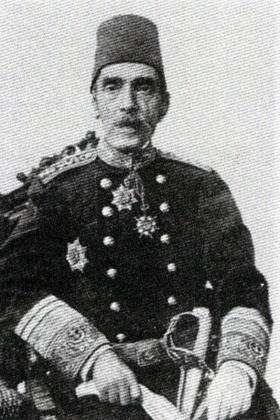
Gabriel pasha Sevian (1822-1900)
The first Armenian military doctor of Ottoman navy

Ferdi pasha Tertjimanian
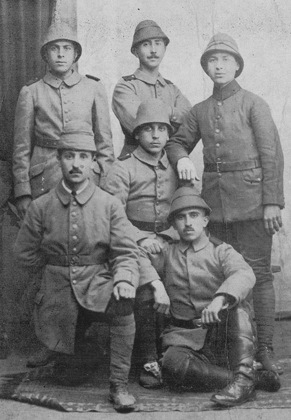
Armenian junior officers of Ottoman army
A. From the left: Eduard Hekimian, Matteos Mamurian, Gaspar Hayrapetian
B. Vardan Stampolian, Shavarsh Khvkhshlian, Anania Abrahamian

The Administration of the “Union of Armenian Officers” of Izmir

Armenian students (from Sebastia) of Harbiye Military college, 1910-1914

Photo of the group of Ottoman officers
In the middle of the photo Tigran Khoyan, military officer, 1917
From the left: Eduard Khachatrian, famous football player, next to him Poghos Shapoian
Row A. In the right: Zarmair in uniform regimentals: famous football player and sportsman

Hakob Siruni with Armenian officers in reserve of Ottoman Army, 1914

Armenian students of the Harbiye Military College, 1913

A group of Armenian officers, who graduated from Harbiye of Constantinople in 1914:
Among them are: Mesrop Kadghberuni, Martiros Zurikian, Mkrtich Khantjian and Mkrtich Shaltjian

Armenian martyrs of the Balkan War, Edirne, 1912
From the left: Grigor Palelozian, Garegin Asturian, Ghlchrian
Sitting: Hakob Chetinian, Mkrtich Sivmelian

A document given to Vahan Efendi Altin Oghli
“Vahan Efendi Altin Oghli, born in 1894, is trainer of gymnastics in the Handicraft college of Aleppo”,issued in 1917

Armenian draftees of the Ottoman army, 1915

Armenian officers of Zilie gymnasium, sitting in the left Galust Syurmenian, sitting in the right Ohannes Sahakian
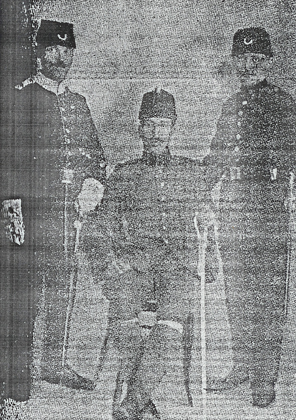
Three Armenian officers of the Ottoman army
From the left: Grigor Sarrafian, Galust Syumenian, Shahen Tatikian (student of Harbiye), Constantinople, 1913
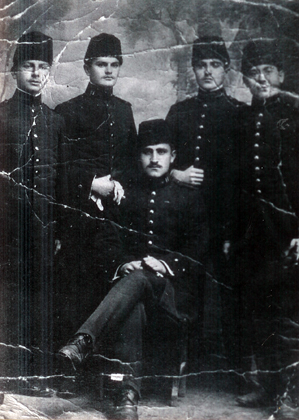
The students of Military school of Constantinople, in the middle – A. Altjian

Armenian officers of Ottoman army

Armenian officers of Ottoman army, 1915/1916

Armenian officers of the Ottoman army
From the right G. Gapzemalian
From the left Hmayak, the son of Petros Efendi - pharmacist from Angara

Sarkis Azatian, military doctor of the Ottoman army, 1914

Beniamin Shaqarian (in the left), officer; the second – his cousin, Constantinople, 1916

Hayk Chizmechian and Tigran Khoian, in regimental uniform of officer of Ottoman army, 1917

Avetis Chepechian
Officer of the Ottoman Army, military doctor, participant of operations of Dardanele and Palestine, 1915

Colonel Boghos bey Tatian (1862-1934)

Yeghiazar Mesyaian
The first Armenian pharmacist of Sebastia martyred during the deportation

Ottoman army colonel Boghos bey Tatian (1862-1934)

Galust Syurmenian, officer, newly graduated from the military college, 1913

Galust Syurmenian, a student of Harbiye

Hovhannes Aspet, 1915

Beniamin Ketikian (nickname - Afion Martiros from Garahisar)

Mihran Kalemkarian, the pharmacist of the Sultan hospital in Nishatash

Levon (surname is unknown), Armenian soldier of the Ottoman army, 21 October 1917

Aram N. Selian, Armenian soldier of the Ottoman army

Galust Syurmenian

Garegin Yoltjian, in regimental uniform of Ottoman army

Suren Azirian, military doctor of the Ottoman army, 1914

Disarmed Armenian draftees of the Ottoman army used as carrier workers, 1915

Hovhannes Feramean, disarmed and killed in 1915, Fourth army

Grigor Aharonean, disarmed and killed in 1915, Fourth army

Rouben Ealnzean, disarmed and killed in 1915, Fourth army

Melkon Taghlyean, disarmed and killed in 1915, Fourth army
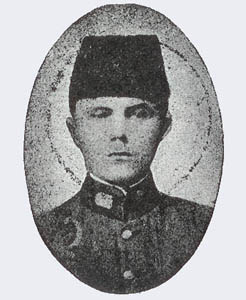
Hakob Zatourean, shot in 1921, Bolatlı

Martiros Terzean, shot in 1921, Bolatlı

Killed Armenian soldier on the road to Bitlis, 1915/16

Corpse of an Armenian soldier worker in Bitlis, 1915/1916

Disarmed Armenian soldier, killed near of Mush, 1915

Beheaded corpses of Armenian soldiers on their way to Bitlis
Photo taken by Russian soldiers, 1915/1916
Sources:
Հայկազեան Հայագիտական Հանդես, Անահիտ Աստոյան, Հայերն Օսմանեան բանակում /ԺԴ. Դարից մինչև 1918/, Պէյրութ, 2008թ.
Տիգրան ՔՀՆՅ. Խոյեան, «Նահատակ ցեղի անմահներ», Պեյրութ, 1983թ.
Գ. Սիւրմէնեան,, Տաճկահայ Զինուոր և Զինուորականութիինը նախ տաճկական ապա Հայկական բանակներուն մեջ, Պէյրութ, 1967թ.
Գ. Սիւրմէնեան, Երզնկա, Գահիրէ, 1947թ.
ՀՑԹԻ, լուսնկարների ֆոնդ, թպ-176, ֆ հ 2009
Վահե Սամուէլեան, Հայ Անցեալը, Երևան
Օսմանեան կայսերական բանակի սպա` Բժիշկ Ավետիս Ճեպեճեանին օրագիրը 1914-1918, Պէյրութ, 1986թ.
Միսաք Քէլէշեան, Սիս-Մատեան, Պէյրութ, 1949թ.
Ա. Տագէսեան, «Վահան Պէտէլեան. Երաժիշտ մանկավարժը», Պեյրութ, 2007թ.
Ալիս Օտեան Գասբարեան, «Պատմագիրք անկիւրիոյ եւ ստանոզի հայոց», Պեյրութ-Լիբանան, 1968թ.
Թեոդիկ, Ամենուն Տարցոյոյցը, Կ. Պոլիս, 1922թ.
N 16, Գաղթականական ալբոմ, 1914-1915թթ.
N 15, Գաղթականական ալբոմ, 1914-1915թթ.
Pars Tuğlacı, Tarih Boyunca Batı Ermeniler, (287-1850), c. 1, İstanbul, 2004
Pars Tuğlacı, Tarih Boyunca Batı Ermeniler, (1891-1922), c. 3, İstanbul, 2004
Pars Tuğlacı, The Role of The Dadian Family in Ottoman social, economic and political life, İstanbul, 1993
Pars Tuğlacı, Dadyan Ailesi’nin Osmanlı Toplum, Ekonomi ve siyaset hayatındaki rolü, İstanbul, 1993
Armenian review, spring/summer, 1992





